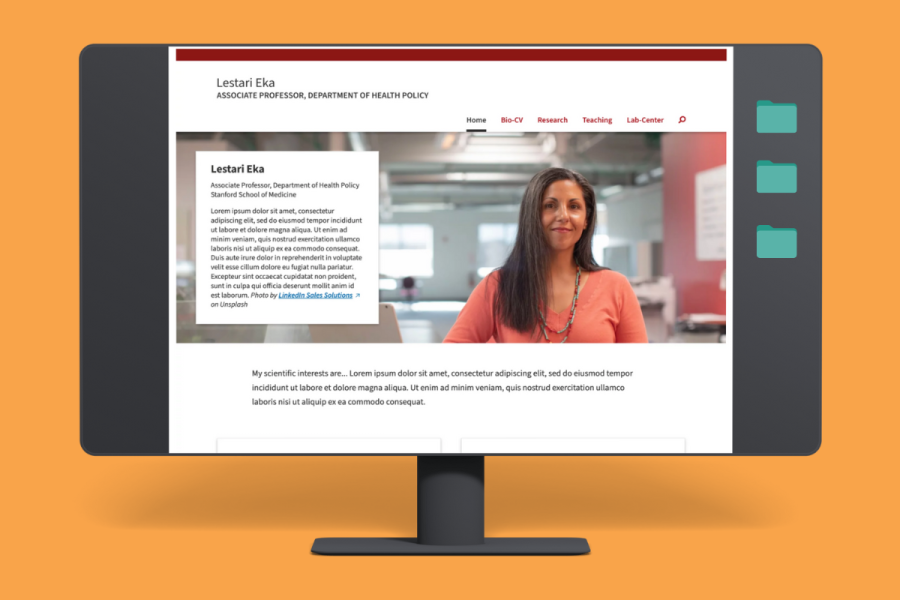We get it. You need your Stanford website up and running like, yesterday.
That's why for the past 24 months, we’ve been growing the Stanford Sites Drupal Platform, a free, self-service tool you can use to build and manage websites for university work. Our platform-as-a-service offers:
- centrally-supported hosting;
- design flexibility;
- integration with Stanford systems;
- and substantial functionality through Drupal.
If your website needs a bit more in terms of hosting services, Stanford's custom hosting on Acquia may be the right option for you.
We're confident you'll find Stanford Sites to be the best solution for your website needs. We also understand that there are other self-service platforms — like Squarespace, Wix, Weebly — that make it look so easy. But before you commit to a third-party platform for your website, we urge you to consider these five essential features.
1. Data security
Stanford Web Services (SWS) works closely with the Information Security Office (ISO) to ensure that the Stanford Sites Drupal Platform meets Stanford’s Minimum Security Standards (MinSec). Regardless of where you choose to host your website, it is required to conform to Stanford's MinSec. Choosing SWS means less work for you!
Did you know that terms of service from vendors may give them ownership of your site’s content? Vendors also have the right to turn material over to authorities. If you want to maintain control over your site’s content, hosting your site outside of Stanford may not be the best option.
2. Accessibility
Stanford is committed to adopting technology solutions in innovative ways with opportunities for greater inclusion and access by all members of the Stanford community. Be sure to review the updated policy in the Stanford Administrative Guide.
SWS works closely with the Stanford Office of Digital Accessibility to implement accessibility features and functionality into the Stanford Sites Drupal Platform to ensure your site meets accessibility standards.
3. Long-term support
Stanford Sites Drupal Platform offers UIT-supported service infrastructure and configuration as well as ongoing maintenance, monitoring and security updates for all sites hosted on the platform. We also provide documentation and a robust User Guide for Stanford Sites.
UIT and our platform-as-a-service hosting partner, Acquia, monitor the Stanford Sites service on a 24/7/365 basis. The service runs on a platform that has multiple layers of redundancy, with uptime that typically exceeds 99.95%. Our service with Acquia includes a service commitment of 99.95% availability.
The person or vendor who builds your site will eventually move on from Stanford, and if something happens, UIT may not have the resources or access to take on support of a website hosted by third-party providers.
Similarly, the NetDB record that stores information about where your website is located will be owned by someone who is no longer at the university, and that could lead to some churn if you need to move the hostname to a centrally-supported service.
Attention Drupal 7 site owners
Drupal 7 support ends November 2023. All Drupal 7 site owners should plan to move their site to the latest version of Drupal in order to continue receiving security updates and community support. Note: Those on Stanford Sites Drupal 7 must move their website to Stanford Sites Drupal 9 before June 30, 2022. Due to funding constraints, the Stanford Sites Drupal 7 environment will be discontinued after June 30. Here's how to move to Stanford Sites Drupal 9.
4. Branding and Identity
The Stanford name and branding are recognizable worldwide, and while we don’t want every site to look the same, all official Stanford websites should retain a clear visual connection to Stanford. The look and feel of Stanford Sites consistently adhere to Stanford’s evolving guidelines, so you don’t have to monitor and manage these changes.
All Stanford websites must comply with Stanford's Identity Guidelines. This helps to ensure the Stanford web experience is consistent, while also providing the flexibility needed to communicate unique messages. The guidelines cover everything from using the Stanford name and logos to colors and typography.
5. Stanford-branded URLs
Hosting your site with Stanford Sites Drupal Platform means UIT creates and manages your Stanford-branded URL.
Having a Stanford-branded URL benefits your website in terms of security, search engine optimization and legitimacy. If you host your site on a third-party platform, your stanford.edu subdomain would need to be set up as a redirect using the Vanity URL service. This means once a user lands on your site, the address displayed in the browser bar would not include stanford.edu. To set up your subdomain, you must first request approval for the URL from University Communications. Then, you can set up a subdomain name that points to your vendor-hosted website.
A big advantage to using Stanford Sites managed CMS is that we’ve worked to ensure it’s in alignment with Stanford's accessibility, security and identity policies. We take care of these features so you don’t have to. Still not convinced Stanford Sites Drupal Platform is the right solution for your website needs? Meet with one of our website strategy consultants to discuss your needs and explore the options.
Resources and support
- Get moving to Stanford Sites Drupal 9 with this quick start guide.
- Plan, rebuild and launch your website on Drupal using our Drupal Adoption Guide.
- If you have questions or concerns about what’s next for your website, let us know.
- Explore all the options for where to build and maintain your website at Stanford.



